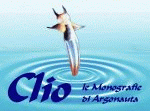
Clio Supplemento a Argonauta 7-12 2012
 |
 |
Murella globularis (Phlippi, 1836)
|
Ecco un'entità siciliana (con alcune popolazioni fuori dall’isola) che ha generato, nel tempo, numerose istituzioni di sottospecie dalla validità spesso priva di reali motivazioni, lungamente più giustificata.
La specie, come le altre siciliane, va considerata alla luce dei lavori di Fiorentino et.al. pertanto come potenzialmente facente parte di una superspecie comprensiva di varie entità multiformi. In effetti M. globularis, in varie situazioni, presenta caratteri non prettamente distinti, a livello di conchiglia, che portano a farla comparare a M. muralis, a M. scabriuscola (forme ibride?) ed a M. platychela oltre che a M. nebrodensis come già ricordato a proposito della popolazione di Cefalù di quest’ultima. La forma di Caltabellotta (AG) si rinviene in anfratti della roccia nella parte alta del paese, sono esemplari piuttosto piccoli (15mm) che si possono rinvenire con colorazioni variabili dal bruno scuro al quasi bianco completo, gli esemplari con marezzature scure ricordano perfettamente i patterns delle M. muralis, anche gli esemplari che si rinvengono nelle necropoli all’inizio del paese sono identici a quelli in alto salve le dimensioni maggiori (21mm) probabilmente a causa della diversità di ambiente, mentre in alto vivono profondamente inserite in fessure anche molto strette, nella necropoli aderiscono alle pareti delle tombe scavate nella roccia. A Monreale (PA) la forma e l’aspetto liscio, oltre al pattern riconducono più facilmente verso M. platychela pur essendo gli esemplari generalmente più piccoli di quest’ultima specie. La popolazione che è stata rinvenuta a Massa Marittima in Toscana, è stata ritenuta appartenere a M. globularis da analisi anatomiche effettuate all’università di Siena dal Prof. Manganelli. La popolazione è decisamente ricca ed è sviluppata in ambiente antropizzato, le motivazioni di tale presenza in ambiente così distante è difficilmente spiegabile, potrebbe trattarsi di apporto antropico, di popolazione relitta, o addirittura di entità autonoma e distinta. |
Here is a Sicilian entity (with some people outside the island) that has, over time, many institutions the validity of subspecies often no real reason, sometimes longer justified. The species, like the other Sicilian, be considered in the light of the work of Fiorentino et.al. therefore potentially as part of a superspecie including various entities multiform. In fact M. globularis, in various situations, presents characters not strictly separate, at the level of a shell, which lead to it relate to M. muralis, to M. scabriuscola (hybrid forms?) and M. platychela well as to M. nebrodensis as already mentioned with regard to the population of Cefalù of the latter. The shape of Caltabellotta (AG) is found in the crevices of the rock in the upper part of the country, are exemplary rather small (15mm) that can be found in colors ranging from dark brown to almost white complete specimens with dark marbling remember perfectly the patterns of M. muralis, even specimens that are found in the necropolis at the beginning of the country are the same as those above prejudice to the larger (21mm), probably because of the diversity of the environment, while the higher living deeply embedded in very narrow slits, in the necropolis adhere to the walls of the rock-cut tombs. At Monreale (PA) the shape and smooth appearance, in addition to the pattern traced back more easily to M. platychela the specimens while being generally smaller than the latter species. The population was found in Massa Marittima in Tuscany, was considered to belong to M. globularis anatomical analysis carried out by the University of Siena by Prof. Manganelli. The population is very rich and is developed in man-made environment, the reasons for their presence in the environment so far is hard to explain, it may be anthropogenic inputs, relict population, or even an independent entity and distinct. |
